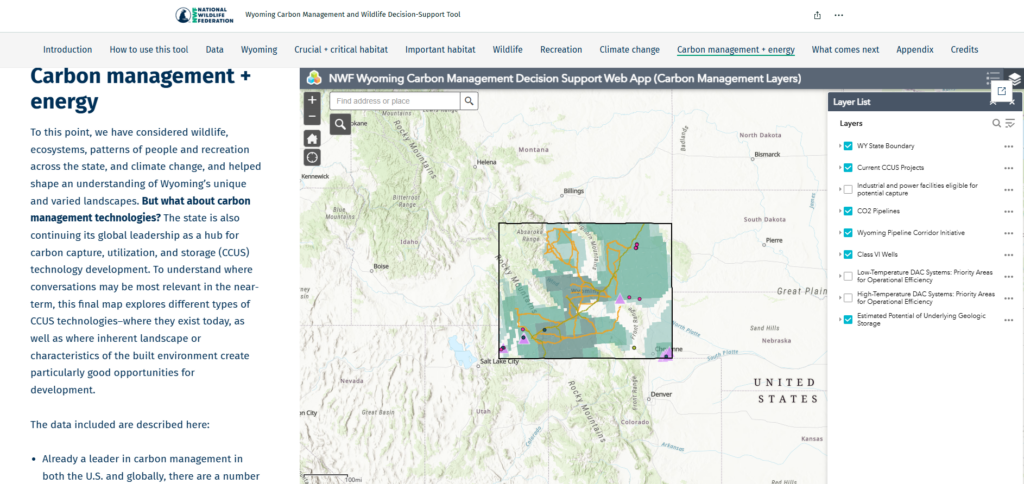Project overview
The National Wildlife Federation (NWF) partnered with Carbon Solutions to develop the Wyoming Carbon Management and Wildlife Decision-Support Tool, integrating carbon management infrastructure with key environmental and wildlife conservation data.
As federal and private investment in carbon capture, utilization, and storage (CCUS) and carbon dioxide removal (CDR) technologies has accelerated in Wyoming, communities and policymakers continue to understand how to balance project development and conservation priorities. This tool provides a unique interactive platform to visualize the overlap between carbon management infrastructure, critical wildlife habitats, and climate-related risks in Wyoming, a state known for its commitment to wildlife conservation, working lands, as well as a key leader in emerging CCUS efforts.
Purpose and Key Objectives
The primary objective of this mapping tool is to support informed decision-making by helping project developers, policymakers, and environmental advocates understand the intersection of carbon management and conservation. The tool overlays existing and proposed CCUS and CDR infrastructure with habitats, migratory corridors, and climate risk factors such as extreme heat, flooding, drought, and wildfires. By providing access to this data in a user-friendly format, the tool bridges the gap between carbon management deployment and environmental protection, ensuring that infrastructure development proceeded in a way that was both effective and ecologically responsible.
Community Impact and Future Development
This mapping tool serves as a valuable resource for communities, conservationists, and industry stakeholders, offering transparency in the planning and siting of carbon management projects. By incorporating real-time environmental and climate data, it allowed users to assess risks and opportunities while fostering a collaborative approach to sustainable development. As CCUS and CDR technologies continue to expand, this tool set a foundation for ensuring that Wyoming—and potentially other regions—could pursue decarbonization without compromising critical ecosystems and wildlife habitats.

